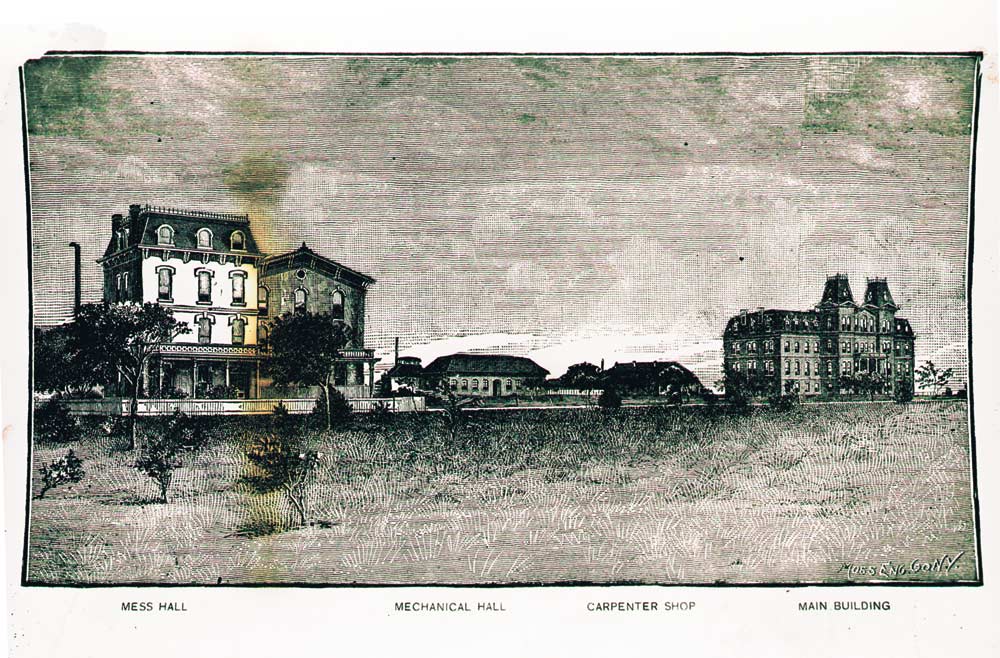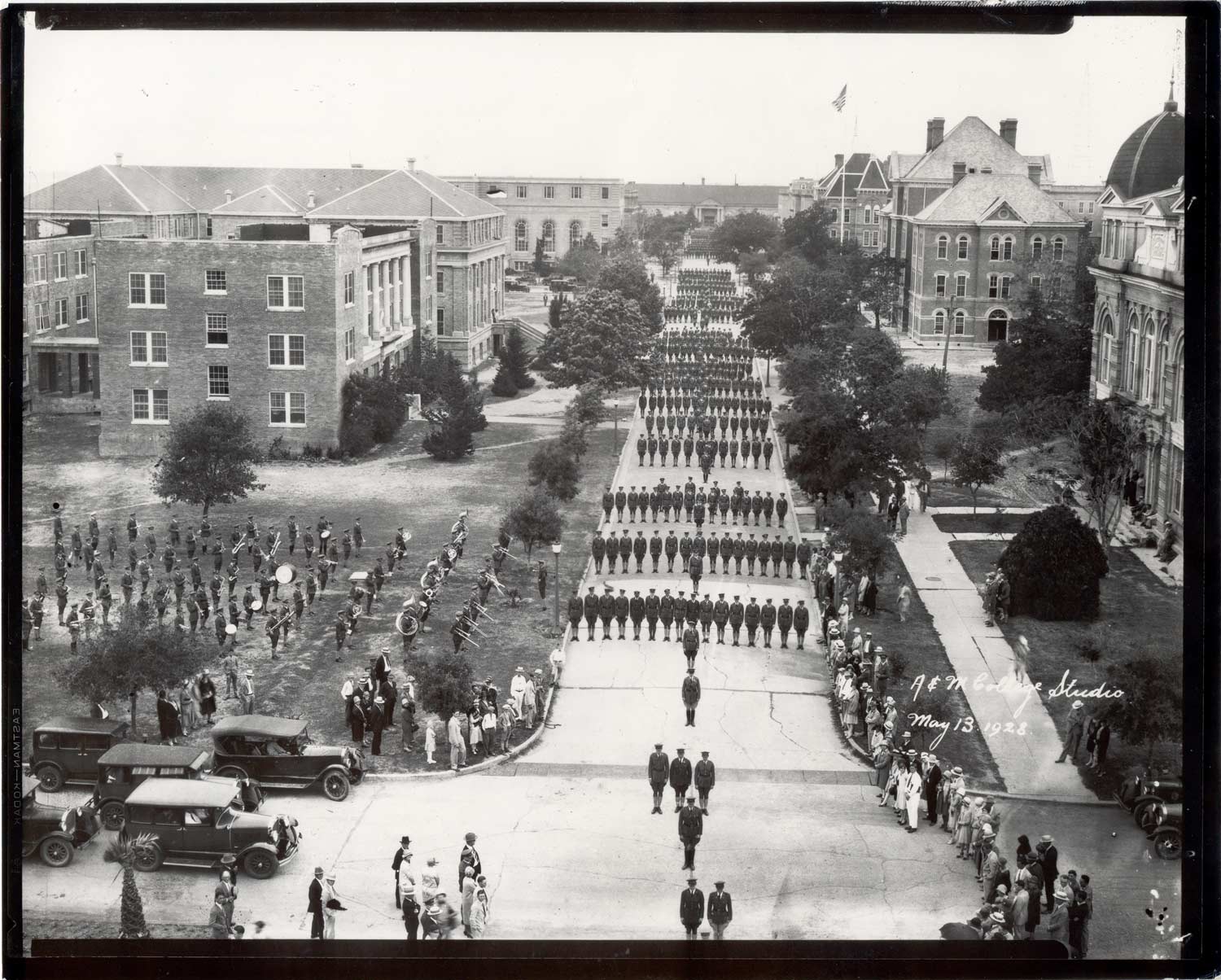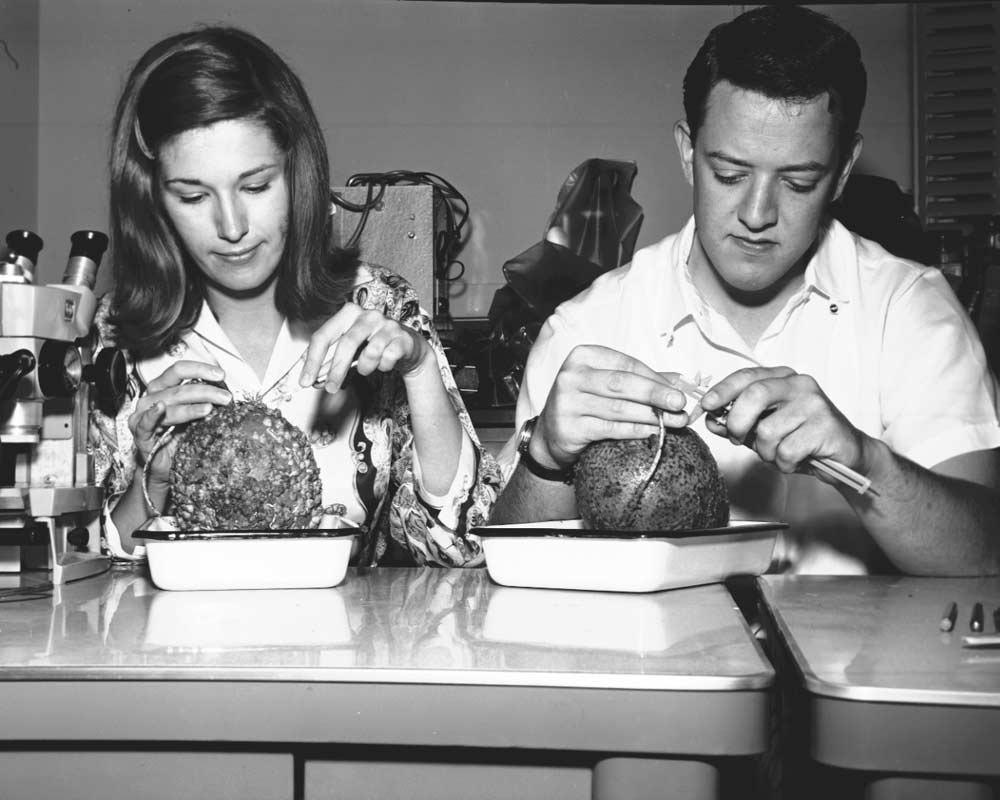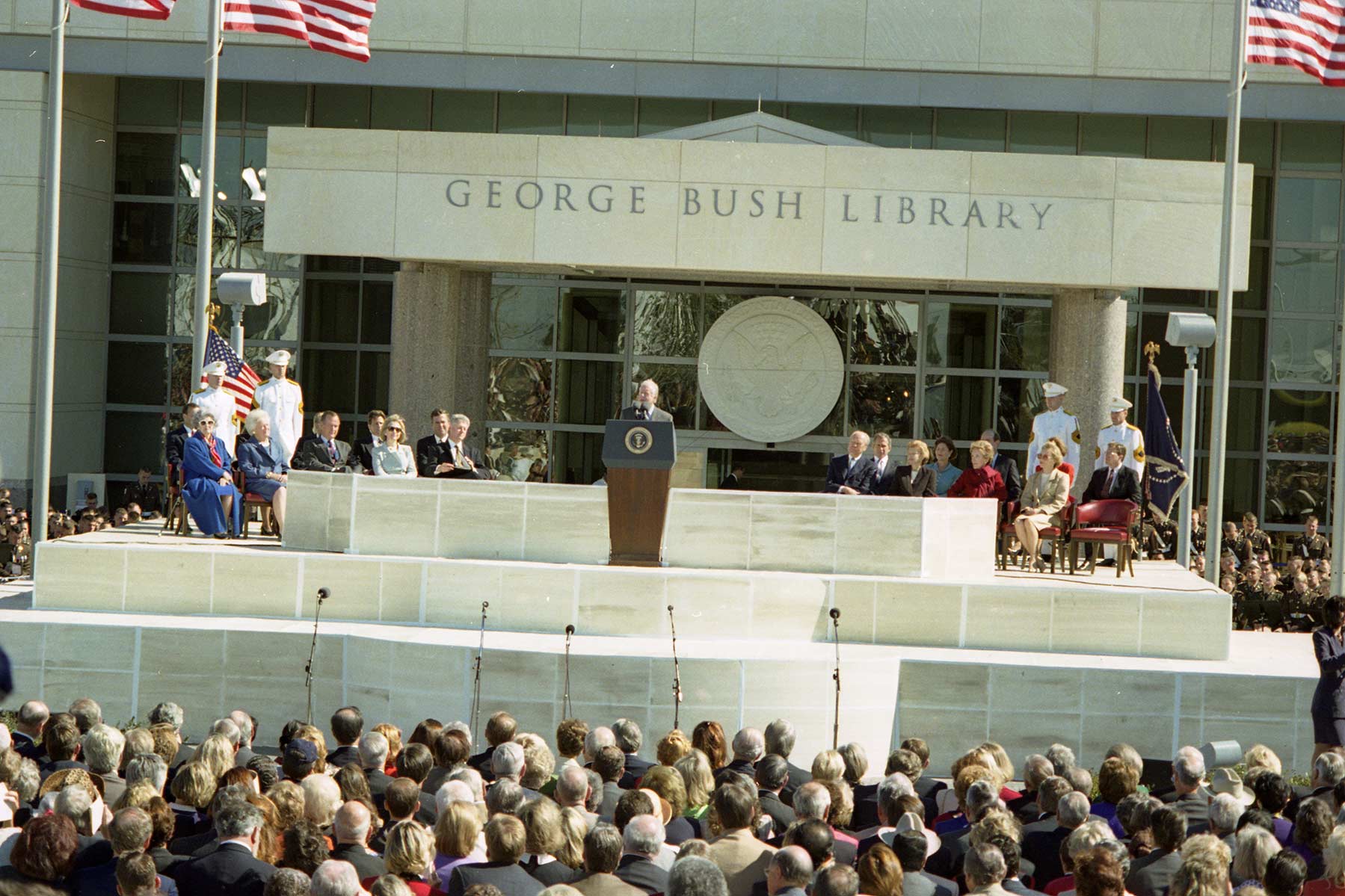History of Texas A&M
At Texas A&M University, we recognize our roots and the milestones that helped us become the institution we are today. Our history stretches back nearly 150 years, and we’ve changed a lot since then. But through the years, we’ve stayed true to our original charge: to educate and develop future leaders who will change the world.


A Corps of Cadets member stands with Reveille I in front of the Academic Building during Texas A&M's early days.
How Our University Began
Morrill Act Provides for Donation of Land in 1862
Texas A&M is the state's first public institution of higher education. The university came about due to the Morrill Act, approved by the United States Congress on July 2, 1862.
The Morrill Act provided for donating public land to the states to fund higher education. It stated that the "leading object shall be, without excluding other scientific and classical studies, and including military tactics, to teach such branches of learning as are related to agriculture and mechanic arts."
Colleges and universities founded due to the Morrill Act are considered "land-grant" institutions.
Agricultural and Mechanical College of Texas Created in 1871
The State of Texas agreed to create a college under the terms of the Morrill Act in November 1866. The Texas Legislature later established the Agricultural and Mechanical College of Texas on April 17, 1871. A commission created to locate the institution accepted an offer of 2,416 acres of land from Brazos County residents in 1871.
Instruction Begins in 1876
On Oct. 4, 1876, the college began instruction with 40 students and six faculty members. Admission was limited to white males, and the Morrill Act required all students to participate in Corps of Cadets military training.

The Corps of Cadets marches down Military Walk in 1928.
Program Offerings Expand
By the early 1900s, the college offered six engineering programs, an agriculture program and an architecture program. In 1915, the School of Veterinary Medicine was established, bringing an influx of students to campus. Throughout the world wars, the college gained prominence due to students’ military service, and it continued to grow as many veterans used the G.I. Bill. With the growth, the college created a graduate program in 1924, and the first doctoral degree was awarded in 1940.

Students work in a Texas A&M lab in 1965, the same year that the university began allowing African Americans and women to attend.
College Diversifies
There were many changes to the Agricultural and Mechanical College of Texas in the 1960s under the presidency of Gen. James Earl Rudder. Under his tenure, the college diversified, opening its doors to African Americans and women. Participation in the Corps of Cadets was also made voluntary in 1965.
College Renamed Texas A&M University
In 1963, the Texas Legislature changed the school’s name from the Agricultural and Mechanical College of Texas to Texas A&M University. The "A" and "M" became a symbolic link to the school's past but no longer officially stood for "Agricultural and Mechanical."
University Becomes Triple-Grant Institution
Texas A&M began as a land-grant university. We also received designations as a sea-grant institution in 1971 and a space-grant institution in 1989. Our university was one of the first four universities distinguished with the triple land-grant, sea-grant and space-grant designations.
Branch Campuses Open
Over the years, Texas A&M has grown to include two branch campuses. The first, Texas A&M University at Galveston, was created in 1962, allowing students to study marine-related subjects in the coastal city of Galveston, Texas. Then, in 2003, Texas A&M University at Qatar was established, focusing largely on engineering fields. In addition to these two branch campuses, our university system includes various centers and programs around the U.S.

The George H.W. Bush Library was dedicated on Nov. 6, 1997. Photo courtesy of the George H.W. Bush Museum.
University Opens Presidential Library
In 1997, Texas A&M opened the George H.W. Bush Presidential Library and Museum on West Campus, becoming one of only a few universities with a presidential library. President George H.W. Bush played an active role at Texas A&M, including hosting and participating in the library's special events.
More Historic University Resources and Photos
Since its beginning, Texas A&M has been led by a line of influential university presidents. Read about their legacies and the unique marks they left on our school.
It’s hard to imagine our now sprawling, bustling university in its early years. View our assortment of historic photographs to better envision Texas A&M’s past and how we’ve evolved.
If you want to see what Aggie student life looked like in the past, check out our yearbook collection. You can browse a variety of yearbooks dating back to 1895.